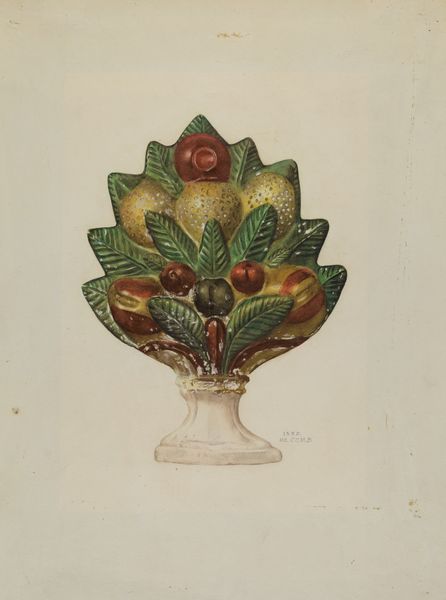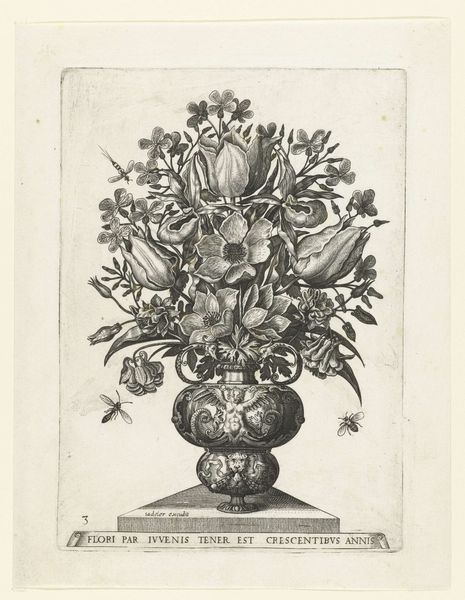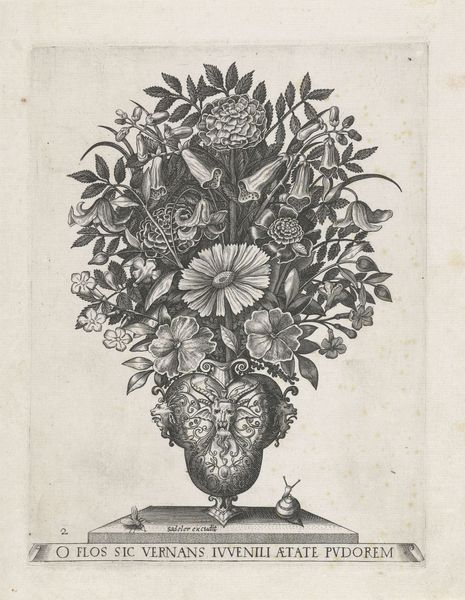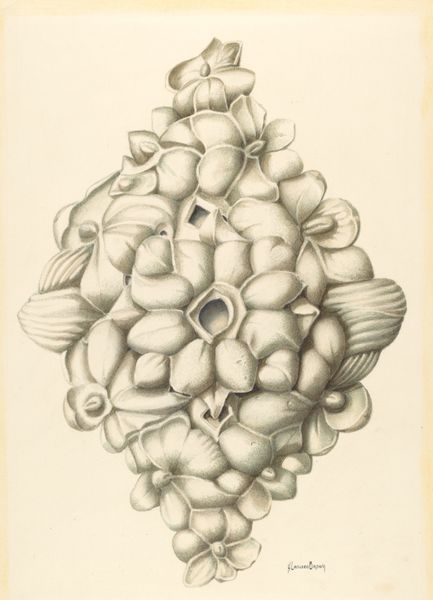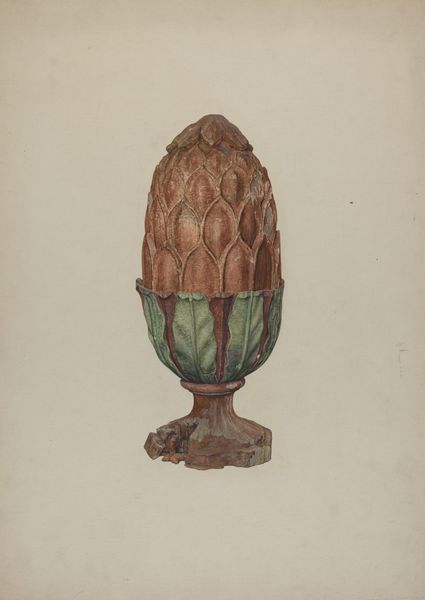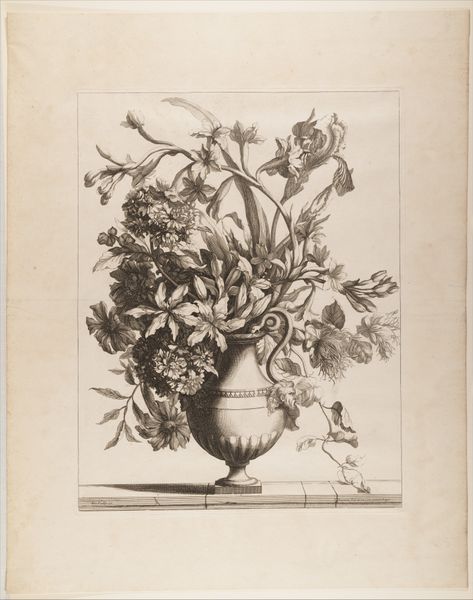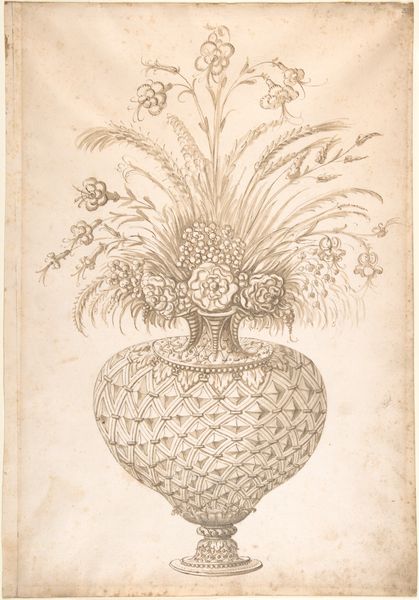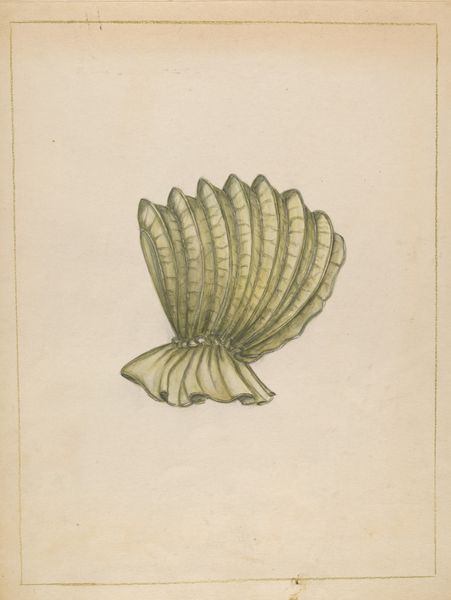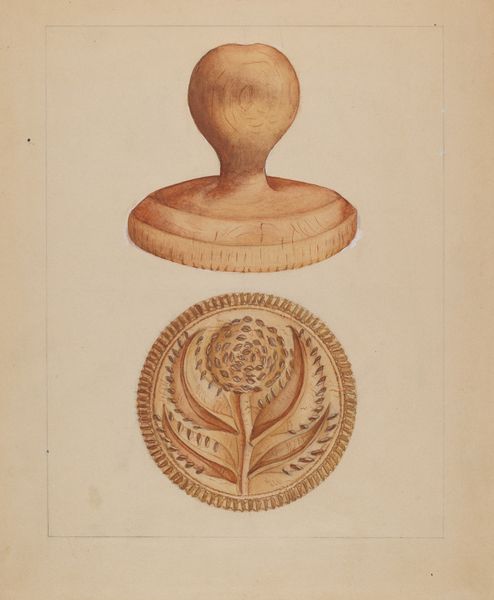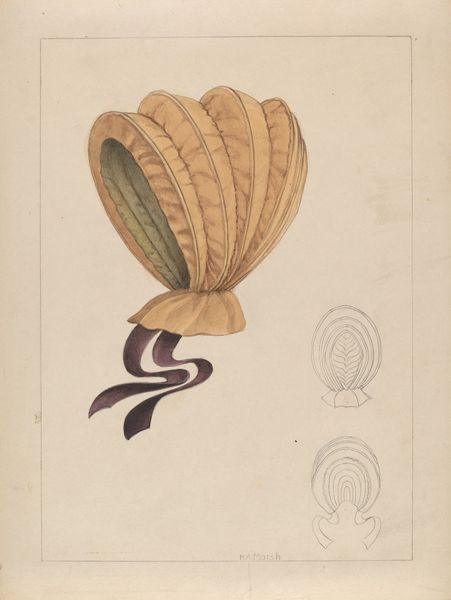
drawing, paper, pencil
#
drawing
#
paper
#
pencil
#
decorative-art
Dimensions: overall: 45.9 x 36.6 cm (18 1/16 x 14 7/16 in.) Original IAD Object: 15 1/4" long; 14 1/2" wide
Copyright: National Gallery of Art: CC0 1.0
Editor: So this is "Carved Ornament," a pencil drawing on paper by Charles Garjian, sometime between 1935 and 1942. It looks like a study for a decorative carving, quite detailed. What historical contexts can you glean from something like this? Curator: This drawing offers a glimpse into the intersection of art, labor, and public works during the Depression era. Consider the context: the Works Progress Administration, or WPA, employed artists to document and create art for public spaces. Garjian's drawing likely falls under this umbrella. How do you think the socio-economic conditions of the time might have influenced the creation and style of this drawing? Editor: Maybe the emphasis on craftsmanship, looking back to traditional skills when so many jobs were lost to industrialization? The ornament itself feels... nostalgic? Curator: Precisely. This idealized vision of ornamentation, drawn rather than carved, hints at both a preservation of craft and the economic realities that may have prevented actual carving. The drawing could be a design proposal, a record of existing ornamentation, or even a training exercise. Do you notice anything about the style that might suggest its public role? Editor: It's quite precise and descriptive, less expressive and more…documentary, perhaps? Aimed to be universally understood. Curator: Exactly. There is also a subtle politics in portraying this ornament, suggesting ideals about beauty and utility amidst economic hardship, a reminder of enduring values perhaps, shaping public perception and morale. These images would often serve as models or historical records within public collections. Editor: It’s fascinating to see how a seemingly simple drawing can tell such a layered story about a specific moment in time. I never would have considered it in relation to the WPA. Curator: It demonstrates how deeply art is embedded within its socio-political fabric. Considering this historical perspective can deepen our appreciation of both the artwork and the context it was created within.
Comments
No comments
Be the first to comment and join the conversation on the ultimate creative platform.

